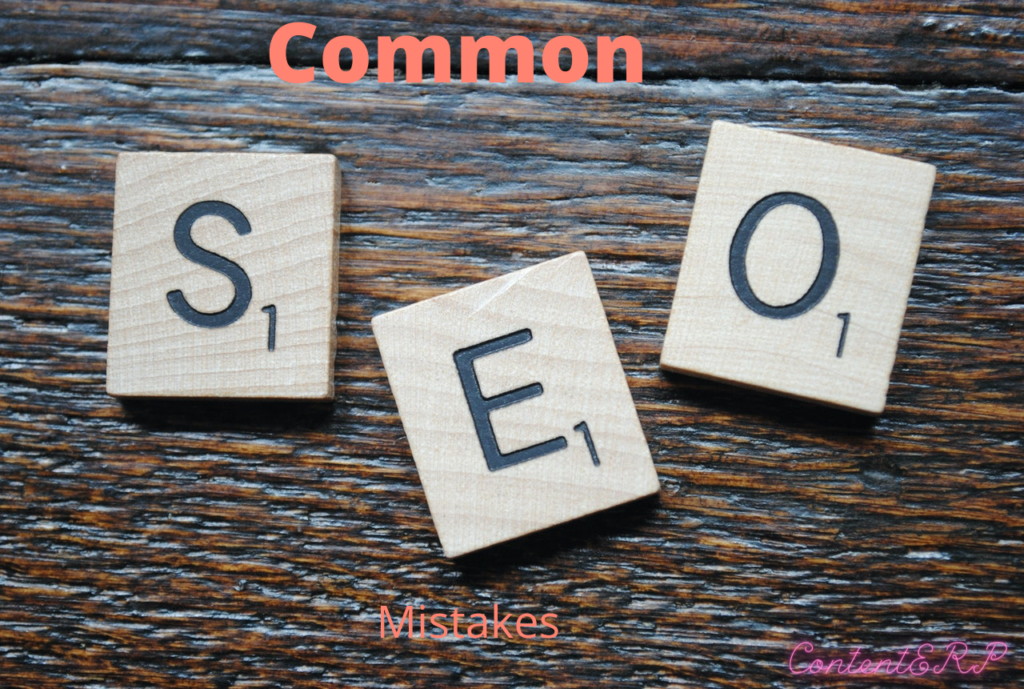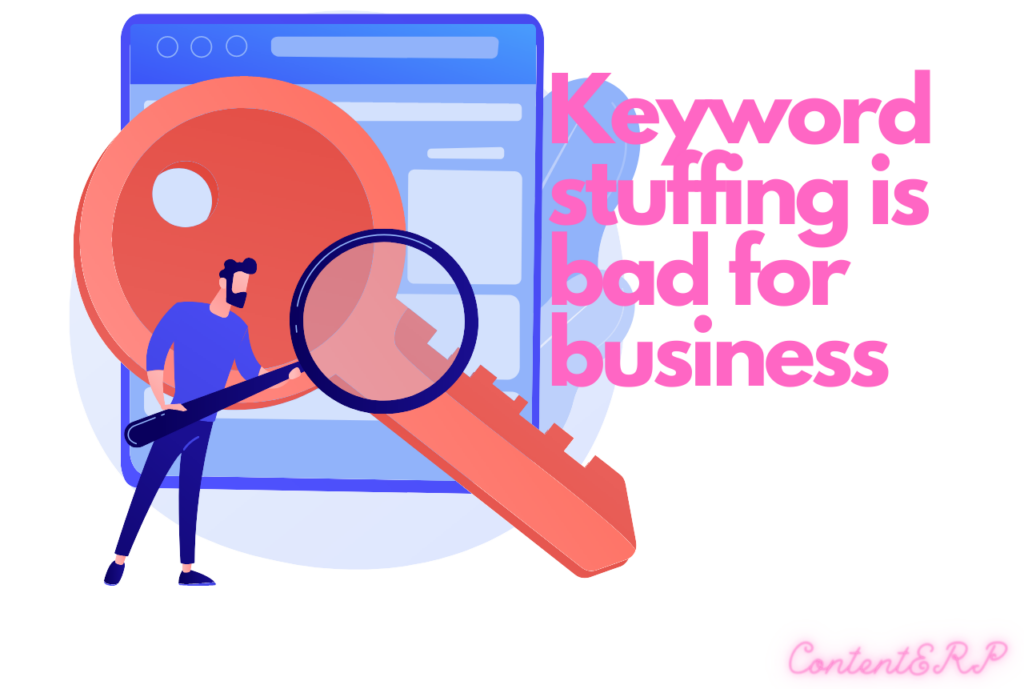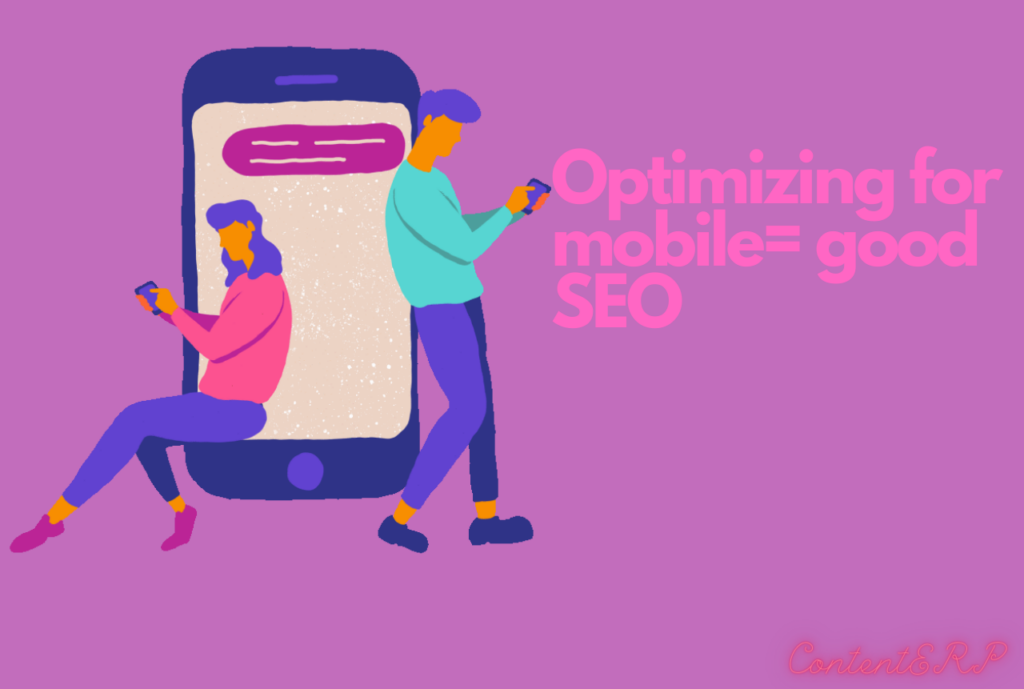What are some common SEO mistakes
Introduction
Are you new to SEO and worried about common SEO mistakes? Don’t worry; we got you. The SEO industry is constantly changing and evolving. As a result, there’s always new information to learn and new practices to adopt, and following SEO strategies is advised.
Common SEO mistakes
Anyone can make mistakes; novice or experienced SEO professionals. These common SEO mistakes can lead to poor rankings for your website or, even worse: a loss of traffic altogether. Below we’ll look at some of these common mistakes and offer solutions so you can avoid them next time!
Not making sure your website is crawlable.
Crawlability and indexing refer to the ability of search engines to read and understand the content on your website. If Google doesn’t know what you’re trying to say, there’s no way for it to add that information to its index. This can result in a poor ranking for relevant terms, making it much harder for users to look for those terms with their query string. Crawling issues plague many websites today—and they’re not just limited to small businesses; even large ones can still fall victim if they don’t take care of these issues!
Keyword stuffing.

Keyword stuffing is when you place keywords where they don’t belong. This can be avoided by using an SEO checklist, which will help you identify areas of your website that aren’t optimized for search engines and fix them accordingly.
Keyword stuffing is terrible for SEO because it makes it more difficult for Google to find relevant content. Users may have trouble finding what they’re looking for on your site. If a user searches for something like “best WordPress plugins,” but no results are linking back to this page (or any other pages), then it’s likely that someone has keyword stuffed their way through the SERPs—and those poor users may end up leaving without finding what they were looking for!

Not optimizing your keywords.
Using a keyword that’s too broad—For example, “green tea health benefits.” You’re not going to rank well for this phrase because so many people are searching for it. Instead, use something more specific like “caffeine-free green tea detox drink recipe.”
Not targeting the right keywords—If you want people to find your website and read it, ensure you use keywords related to what they were looking for. If they were looking at something else first, don’t waste time optimizing a page specifically around those keywords! This is called “keyword stuffing,” where someone throws as many words into their content as possible until they hit targeted results (which isn’t helpful). The best way around this issue is using tools like Google Keyword Planner or SEMrush’s Keyword Research tool, allowing users to create automated lists based on specific criteria including industry verticals and phrases.”
Inconsistent or duplicate content.
Duplicate content can noticeably impact your rankings and is one of the most common SEO mistakes. Duplicate content is not suitable for SEO. Search engines use duplicate content to identify and penalize websites showing up in their SERPs with the same content, regardless of whether it’s from the same source.
Duplicate pages will hurt your site’s rankings and may even result in you being removed from Google search results!
Duplicate content is often caused by multiple versions of the same page published on your site. This could be because someone has created an advanced version of your website or because you’ve added new features that require more media files (like video).
Here are some common causes of duplicate content
- Using an exact copy/paste from another source without any updates/changes made to that original source (copying something straight off an article without adding anything new), is also known as plagiarism.
- Copying large portions of text or images from another website
To avoid this problem:
- Create unique content for each page instead of duplicating existing material.
- Use 301 redirects so that people who land on the old page will automatically be redirected to the new one when they visit again.
Forgetting about sitemaps
For example, if you have a blog post that includes links to other articles on your site, you can use sitemaps and metadata to tell search engines what those other articles are about.
Sitemaps help search engines understand the structure of your website by including links to all of its pages (including internal links). This means that when someone searches on Google or Bing for information related to the topic of your web page, the site will appear in their results.
Ignoring search intent
Google favors sites whose content satisfies the search intent for a given query. Search intent refers to the ultimate motivation behind a user’s search. You have to figure out what a user wants to get when searching that query on Google. Is the searcher looking to buy something? Or are they trying to learn something?
If you fail to satisfy the searchers’ intent, you won’t be able to rank for very long.
Not optimizing for mobile

As reported by Google, more than half of online searches are done by mobile. For this reason, search engines prioritize responsive websites that can load just as well on mobile devices as on desktop computers.
Neglecting the mobile aspect of your site is a grave mistake that could have you penalized severely.
Not paying attention to 301 redirects.
301 redirects are an important part of your SEO strategy. They tell search engines where to send users moving from one page on a website to another, so they can find what they’re looking for more quickly.
For example, if you have a blog post titled “SEO Mistakes” that links to a site: http://www.example-site/seo-mistakes/, then Google might send people directly to this URL: http://www.example-site/seo-mistakes/blog/.
If the link doesn’t include “blog,” then Google won’t know how to direct people back here later (and thus won’t count it as an optimized entry point).
In other words, if there’s no explicit path for someone coming from outside of your website to get back inside again (aka “backlinks”), then Google cannot see any value in linking towards those pages—which means they’ll probably penalize them!
Slow Site Speed
Slow site speeds will kill your website. Users are unlikely to keep browsing a slow webpage even if the content provided is relevant. This will affect the bounce rate of your website. Search engines use bounce rates to tell whether a site is good, has good content, or if something is broken.
Non-Optimized Images
Images are key to a website’s SEO, but they can be challenging to optimize. The first step in optimizing your images for SEO is deciding what you want them to do. Do you want them to be high-quality and stand out from other pages on your website? Or do you want them to link back directly to the product page they came from so users can easily find it again later?
The second step of optimizing images for SEO involves taking care of some common issues that prevent search engines from seeing them properly:
- File size: Keep an eye on how large each image is compared with other images on your site and adjust accordingly if necessary (e.g., reduce the file size by removing unnecessary metadata).
- File type: Make sure all images are in GIF or PNG format instead of JPG because these formats will help get better indexed by Google!
- Missing alt tags: ALT attributes provide search engines and visually impaired people with descriptions of the images in your content. Relevance is lost without them, and engagement can suffer.
Thin Content
Thin content is copy that’s not useful for the reader. It may include an image, a link to another page on your website, or any other piece of information that won’t provide value to your visitors.
This type of writing can be hard on search engines because it takes up space and doesn’t add much value to the user experience (UX). The best way to avoid this problem is by creating content that has relevant information to users. It is also crucial to learn the market you are catering to. Hence, there aren’t gaps between them where thin content might appear.
Broken Links
Broken links are bad for search engine rankings but can also miss the site owners, and search engine crawlers can also miss them. Users may also take notice of the broken link and report it to Google. This can lead to lower rankings in the SERPs and reduced organic traffic from Google Webmaster Tools (GWT).
Broken links can be detected by crawling websites regularly with web crawlers built into tools like Screaming Frog or Open Site Explorer (OSE). When these tools find broken links on your site, they will mark them with a red dot, so you know which pages have been affected by this issue.
Long URLs
Short URLs are easier to remember and use, making them an excellent option for SEO. They also make it easy for users to share your content on social media platforms like Facebook or Twitter. Shortening your links also reduces the amount of code in your site, which can help improve performance on mobile devices and search engine bots (which crawl through sites).
Summary
SEO mistakes can reduce the quality of your site and harm your SERP rankings. While embarking on this journey, it is important to know what to do, but more importantly, what not to do. Bad SEO practices have crippled many websites, don’t be one of them.
DO NOT take shortcuts. Instead, go over every SEO item carefully. If you are unable to do it yourself, consider hiring a professional. It will be a worthy investment.

